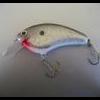
BobP replied to ABW's topic in General Bass Fishing Forum

BobP replied to airborne_angler's topic in Fishing Tackle


BobP replied to atlantaman's topic in Fishing Rods, Reels, Line, and Knots
Tagged with:

BobP replied to tcbass's topic in Fishing Tackle

BobP replied to OkobojiEagle's topic in Fishing Tackle

BobP replied to Tiller's topic in Fishing Rods, Reels, Line, and Knots

BobP replied to Montanaro's topic in Fishing Rods, Reels, Line, and Knots

BobP replied to midgastumpjumper's topic in Bass Boats, Canoes, Kayaks and more
We have placed cookies on your device to help make this website better. You can adjust your cookie settings, otherwise we'll assume you're okay to continue.

